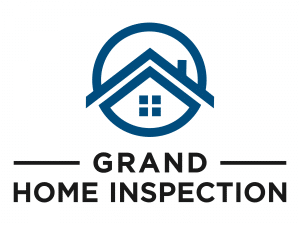Here in Michigan we’ve adapted pretty well to winter living – from snow tries and warm jackets to modern building practices that protect our homes. Building science has come a long way, but many homes in the area haven’t been updated to protect against one of the worst winter hazards: ice dams. Ice dams can form on your roof and direct water directly into your home. Given water is the number one destroyer of houses, let’s explore how these ice dams form and what you can do to get rid of them.
So, what are ice dams and how are they caused? Ice dams form when lost heat from your home’s interior melts snow on your roof. The water from melted snow runs down the roof until it reaches the soffit, or area overhanging the side of the home. The space beneath this overhang is not heated by indoor air, so the melted snow refreezes before it runs off the roof. Over time this ice builds up to a point where it acts as a dam that does not allow water to run off the roof. Instead this water will flow underneath the shingles and end up in your home! This can cause mold growth, decay, and other costly problems.
Now that we’ve identified the problem, let’s talk about the solution, which is a properly configured attic space. The attic is a system and all parts must work together properly to prevent interior heat loss from reaching the roof. The two components that we are concerned with when it comes to ice dams are insulation and venting. Insulation and ventilation work together to make mitigate conditions that can lead to snow melting on the surface of the roof.
Insulation is installed on the attic floor to keep warm air from escaping into the attic. What surprises a lot of homeowners is the recommended depth of insulation. According to modern building practices, thermal insulation should be about 24 inches deep on the attic floor! I’m in a lot of attics and I often see insulation that just fits between the 2x4s for a total depth about 20 inches shy of modern standards! Appropriate insulation will keep a lot of heat from escaping into the attic space, but it cannot prevent all heat loss even when best practices are followed. That’s why we have ventilation.
A properly configured attic space will be approximately the same temperature as the outside air so as not to melt the snow above. Since even the best insulation cannot prevent all indoor heat from making its way into the attic, we use vents to allow outdoor air to freely exchange with air in the attic space. This can be accomplished with many types of vents, but the bottom line is there should be one square foot of ventilation for every 150 square feet of attic space. Older homes typically have gable vents on either side of a peaked roof, newer homes usually have a combo of soffit vents with ridge or box vents. There needs to be an entry and an exit point so the air can flow, and in the case of soffit vents they should not be blocked by insulation.
A qualified contractor can help to get the attic system set up so ice dams will not direct water into your home. A properly configured attic will help you avoid mold, decay, and other costly problems caused by water. Another major advantage is that an attic conforming to modern best practices will give you the biggest bang for your buck when it comes to energy costs, (even more so than ultra high efficiency appliances).
If you have ice dams forming on your roof, like the one in the picture above, take a look inside your attic and see how your insulation and ventilation stack up to modern standards.


How WDO Inspections Protect Your Property’s Value
Many homeowners don’t consider getting a wood-destroying organism (WDO) inspection unless they are selling their home. However, these are the inspections that protect your property from depreciation. The WDO inspection benefits can never be understated. These inspections provide detailed and useful insights into your property to confirm if it’s ever been under a WDO attack. […]
How Air Quality Tests Can Pinpoint Mold in Your Home
You can’t expect anything good from mold. That’s obvious. But its adverse effects come as a surprise – both on health and at home. Mold is a pollutant affecting your home and family. When it comes to health issues, it causes respiratory issues, allergies, infections and asthma attacks. Mold is also responsible for wood decays, […]
How Seasonal Pool Inspection Can Save You Money in the Long Run
Your poolside paradise needs protection! You must have imagined a summer full of poolside relaxing moments, sipping your pina colada, and having the best time ever. But, pause this rejuvenating plan for a bit and imagine what if the blessing in disguise – your pool starts experiencing some unseen issues? Which later affects its safety […]